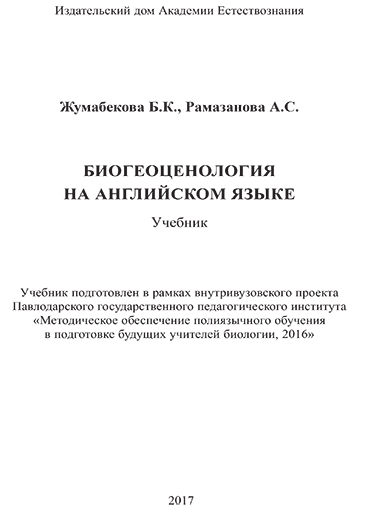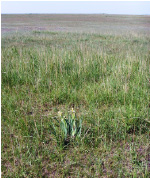
Научная электронная библиотека
Монографии, изданные в издательстве Российской Академии Естествознания
Chapter 10. A VARIETY OF ECOSYSTEMS
|
Essential targets: By the end of this chapter you should be able to discuss about: Major ecosystem types; Distinctive features of ecosystems. |
Read the text and make essential assignments. Divide the text into the parts. Suggest a heading for each part. Make the small cards on each part with the illustration as following: / Мәтінді оқып шығыңдар. Мəтінді бөліктерге бөліңдер. əрбір бөлікке атау ұсыныңдар. Әрбір бөлікке келесі үлгідегідей суреті бар кішкентай кәртішке жасаңдар / Прочитайте текст. Разделите текст на части. Предложите заголовок для каждой части. Сделайте маленькие карточки для каждой части с иллюстрацией по следующему образцу:
|
|
Steppe ecosystem - found in temperate regions; - characterized by a semi-arid and continental climate: has warm summers and really cold winters; - isn’t much humidity; - characterized by grassland plains without trees; - animals – rabbits, mice, antelopes, horses, etc. When the short grasses of the steppe are plowed under for agriculture, the soil can erode very quickly. |
An ecosystem is a community of living organisms in conjunction with the nonliving components of their environment (things like air, water and mineral soil), interacting as a system [1]. These biotic and abiotic components are regarded as linked together through nutrient cycles and energy flows [2]. As ecosystems are defined by the network of interactions among organisms, and between organisms and their environment, they can be of any size but usually encompass specific, limited spaces (although some scientists say that the entire planet is an ecosystem) [3].
A variety of ecosystems exist, based on vegetation cover, remote sensing, and bioclimatic classification systems. The major types of ecosystems are forests, grasslands, deserts, tundra, freshwater and marine [4].
Forest ecosystems are classified according to their climate type as tropical, temperate or boreal. In the tropics, rainforest ecosystems contain more diverse flora and fauna than ecosystems in any other region on earth. In these warm, moisture-laden environments, trees grow tall and foliage is lush and dense, with species inhabiting the forest floor all the way up to the canopy. In temperate zones, forest ecosystems may be deciduous, coniferous or often times a mixture of both, in which some trees shed their leaves each fall, while others remain evergreen year-round. In the far north, just south of the Arctic, boreal forests – also known as taiga – feature abundant coniferous trees (Pic.1) [4].
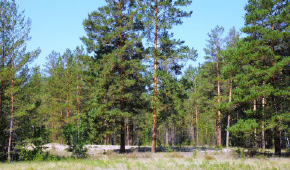
Picture 1. Chaldai pine forest in Pavlodar Region, Kazakhstan
Different types of grassland ecosystems can be found in prairies, savannas and steppes (Pic.2). Grassland ecosystems are typically found in tropical or temperate regions, although they can exist in colder areas as well, as is the case with the well – known Siberian steppe. Grasslands share the common climactic characteristic of semi-aridity. Trees are sparse or nonexistent, but flowers may be interspersed with the grasses. Grasslands provide an ideal environment for grazing animals [4].
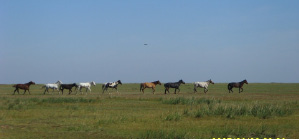
Picture 2. Steppe in Pavlodar Region, Kazakhstan
The common defining feature among desert ecosystems is low precipitation, generally less than 25 centimeters per year. Not all deserts are hot – desert ecosystems can exist from the tropics to the arctic, but regardless of latitude, deserts are often windy. Some deserts contain sand dunes, while others feature mostly rock. Vegetation is sparse or nonexistent, and any animal species, such as insects, reptiles and birds, must be highly adapted to the dry conditions (Pic.3) [4].
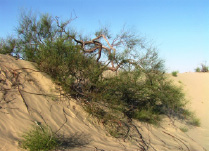
Picture 3. Desert ecosystem, Eastern Kazakhstan
As with deserts, a harsh environment characterizes ecosystems in the tundra (Pic.4).
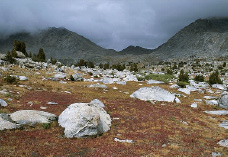
Picture 4. Tundra [4]
In the snow-covered, windswept, treeless tundra, the soil is frozen year-round, a condition known as permafrost. During the brief spring and summer, snows melt, producing shallow ponds which attract migrating waterfowl. Lichens and small flowers may become visible during this time of year. The term “tundra” most commonly denotes polar areas, but at lower latitudes, tundra-like communities known as alpine tundra may be found at high elevations [4].
Freshwater ecosystems can be found in streams, rivers, springs, ponds, lakes, bogs and freshwater swamps (Pic.5). They are subdivided into two classes: those in which the water is nearly stationary, such as ponds, and those in which the water flows, such as creeks. Freshwater ecosystems are home to more than just fish: algae, plankton, insects, amphibians and underwater plants also inhabit them [4].
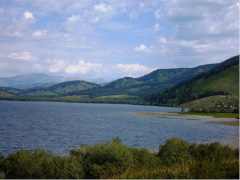
Picture 5. A Markakol lake in East Kazakhstan
Marine ecosystems differ from freshwater ecosystems in that they contain saltwater, which usually supports different types of species than does freshwater (Fig.6). Marine ecosystems are the most abundant types of ecosystems in the word. They encompass not only the ocean floor and surface but also tidal zones, estuaries, salt marshes and saltwater swamps, mangroves and coral reefs [4].
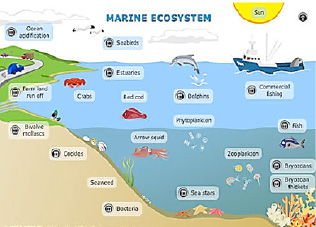
Figure 6. Elements of a basic marine ecosystem [5]
Glossary of essential terms / Негізгі терминдер глоссарийі / Глоссарий основных терминов
|
№ |
English term |
Kazakh equivalent |
Russian equivalent |
|
1 |
coniferous |
кылқанды |
хвойный |
|
2 |
deciduous |
жапырақты |
лиственный |
|
3 |
desert |
шөл |
пустыня |
|
4 |
drought |
құрғақшылық |
засушливость |
|
5 |
forest |
орман, тоғай |
лес |
|
6 |
freshwater ecosystems |
тұщы су экожүйесі |
пресноводная экосистема |
|
7 |
latitude |
кеңдігі |
широта |
|
8 |
marine ecosystems |
теңіз экожүйесі |
морская экосистема |
|
9 |
permafrost |
мәңгі тоң |
вечная мерзлота |
|
10 |
pond |
байлама |
пруд |
|
11 |
sparse |
сирек |
редкий |
|
12 |
spring |
бұлақ |
родник |
|
13 |
stream |
бұлақ |
ручей |
|
14 |
tidal zone |
құйылыс аймағы |
зона прилива |
|
Questions: What types of forest ecosystems are there? What is included in freshwater ecosystems? What is included in marine ecosystems? What is the distinguishing feature of desert ecosystems? What the climate of the steppe is like. Where each ecosystem is found and what its geography is like. The special adaptations of the vegetation to the desert. The types of animals found in the ecosystem and their physical and behavioral adaptations to their environment. |
|
Key phrases and sentences / Түйінді сөздер мен сөйлемдер / Ключевые фразы и предложения 1. An ecosystem is … / Экожүйе дегеніміз … / Экосистема это … 2. An ecosystem includes … / Экожүйе … қамтиды / Экосистема включает … 3. Forest ecosystems are characterized by the following features: … / Орман экожүйелердің басты белгілері: … / Лесные экосистемы характеризуются следующими признаками … 4. Forest ecosystems are home to many species of plant and animals such as … / Орман экожүйелері көптеген өсімдіктер мен жануарлар түрлерінің мекендеу ортасы болып табылады, мысалы: ... / Лесные экосистемы являются средой обитания для многих видов растений и животных, таких как … |
I. Translate into English and Kazakh / Ағылшын және қазақ тілдеріне аударыңдар / Переведите на английский и казахский языки.
Леса дают разнообразные условия для обитания животных: они могут питаться хвоей, листьями деревьев, их почками, семенами, корой, древесиной, спадом, корнями, пыльцой и нектаром, стеблями, побегами, листьями травянистых растений и т. д. Лес предоставляет множество удобных укрытий и мест для устройства гнезд в кронах деревьев, под корой, под упавшими стволами деревьев, в старых пнях, в почве.
II. Make a dialogue on the topic of the lecture/ Дәріс тақырыбы бойынша диалог құрастырыңдар / Составьте диалог по теме лекции.
III. Fill in the table/ Кестені толтырыңдар/ Заполните таблицу.
Types of ecosystems
|
Ecosystems |
Distribution |
Climate |
Relief |
Flora and fauna |
Classification |
Value |
|
Forest |
||||||
|
Grassland |
||||||
|
Desert |
||||||
|
Tundra |
||||||
|
Freshwater |
||||||
|
Marine |
IV. See the video clip on the link (https://www.youtube.com/watch?v=aYmdrJWLQ4Y). Make five questions / Сілтеме бойынша бейне жазбаны қарап шығыңдар (https://www.youtube.com/watch?v=aYmdrJWLQ4Y). Бес сұрақ құрастырыңдар / Посмотрите видео по ссылке (https://www.youtube.com/watch?v=aYmdrJWLQ4Y). Составьте пять вопросов.
V. Prepare a presentation PPT on one of the proposed topics / Ұсынылған тақырыптардың біріне РРТ презентациясын дайындаңдар/ Подготовьте презентацию PPT на одну из предложенных тем:
Forests of Kazakhstan.
The climatic conditions of the steppes.
Karatau Mountains.
Lake Alakol.
Deserts of Kazakhstan.
|
SUMMARY An ecosystem is a community of living organisms in conjunction with the nonliving components of their environment, interacting as a system. Structure and function of the ecosystem is largely determined by its distribution in geographical area. There are of forest, steppe, tundra, marsh, meadow, desert and semi-desert, Arctic and Antarctic, boreal ecosystems. |
 Topics for essay:
Topics for essay:
1. The problem of classifying of biogeocenotic systems.
2. Steppe ecosystems.
3. Wetland ecosystems.
4. The semi-desert ecosystems.
5. Arctic and Antarctic ecosystems.
6. Taiga ecosystems.
7. The investigation of meadow ecosystems.
8. The geographical features of meadow ecosystems.
9. The flora and fauna of meadow ecosystems.
10. Ecology of meadow ecosystems.
 References:
References:
1. Hatcher, Bruce Gordon (1990). “Coral reef primary productivity. A hierarchy of pattern and process”. Trends in Ecology and Evolution. 5 (5): 149–155. doi:10.1016/0169-5347(90)90221-X. PMID 21232343.
2. Tansley (1934); Molles (1999), p. 482; Chapin et al. (2002), p. 380; Schulze et al. (2005); p. 400; Gurevitch et al. (2006), p. 522; Smith & Smith 2012, p. G-5
3. Odum, EP (1971) Fundamentals of ecology.
4. Marine ecosystems // http://www.eu-hermione.net/learning/marine-ecosystems, third edition, Saunders New York, ISBN 0534420664
5. https://en.wikipedia.org/wiki/Ecosystem
